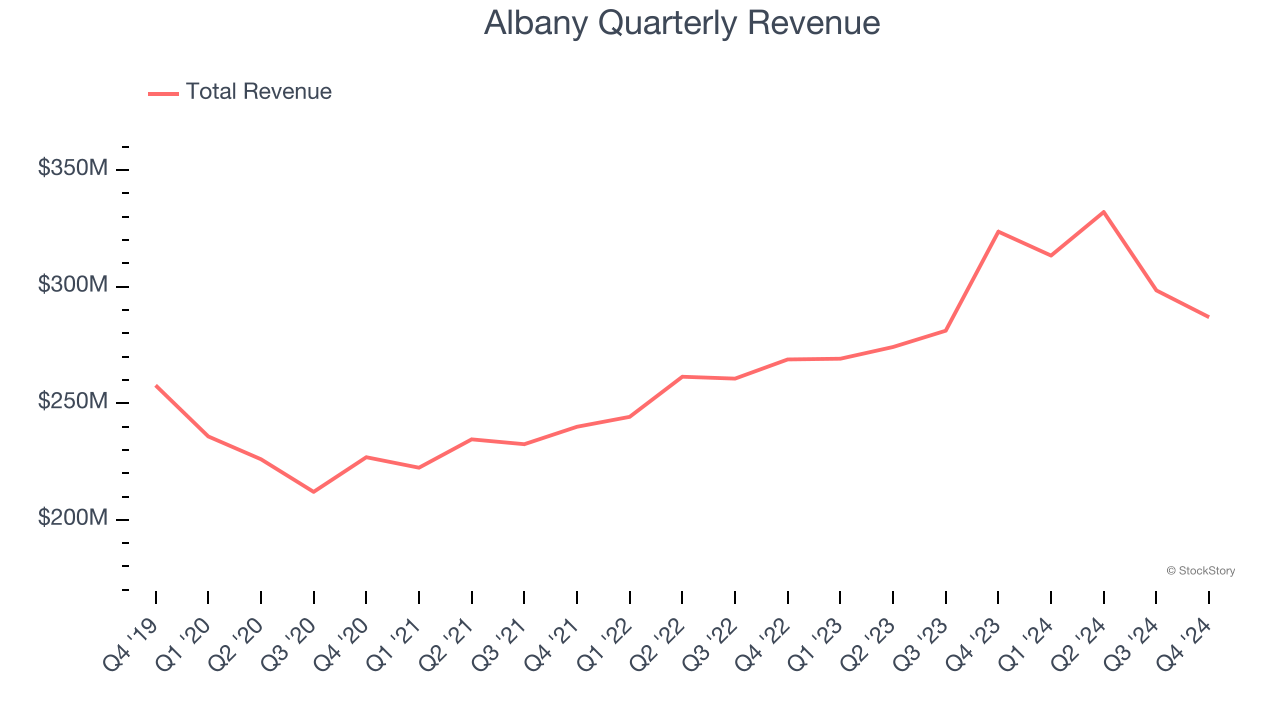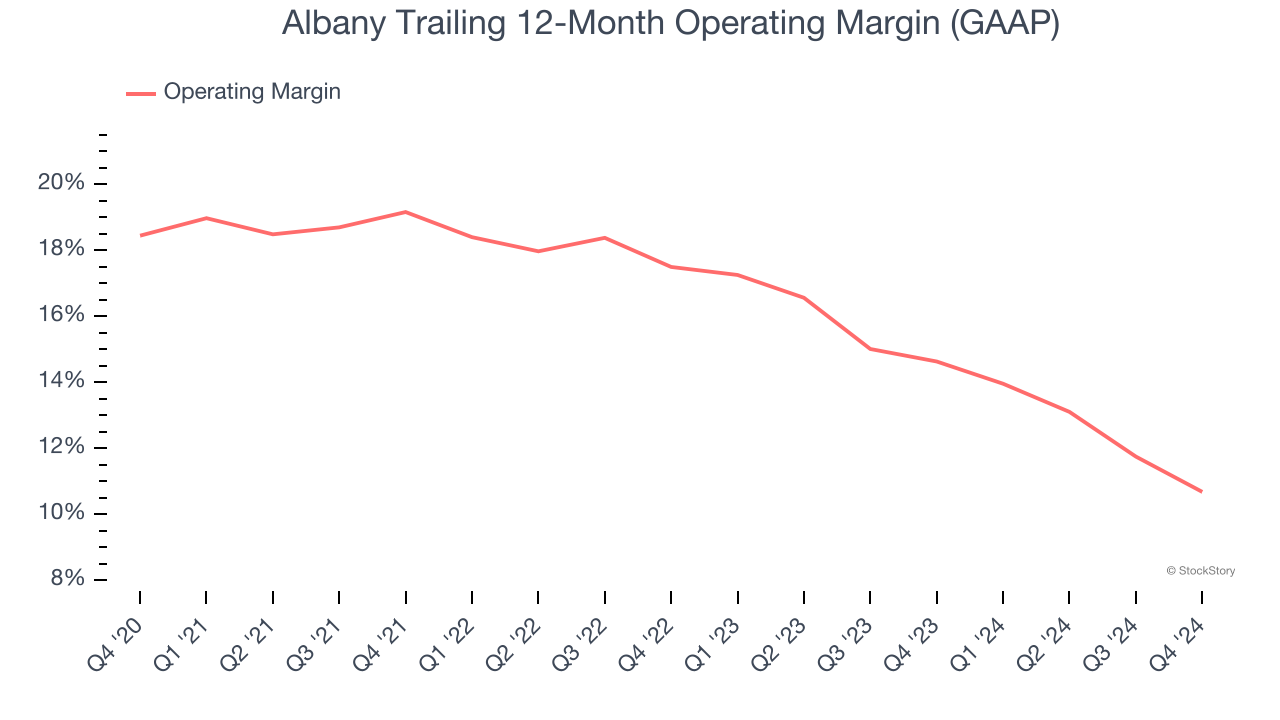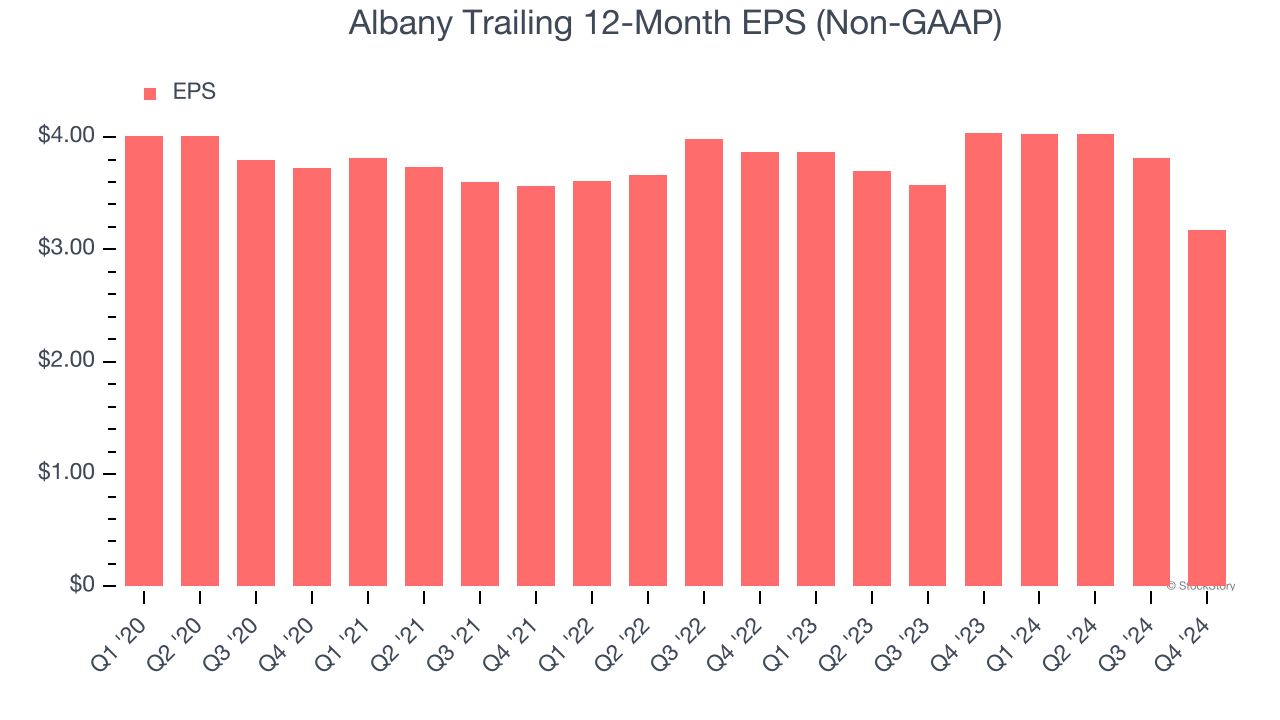
Albany trades at $62.35 per share and has stayed right on track with the overall market, losing 14.4% over the last six months while the S&P 500 is down 10.6%. This was partly driven by its softer quarterly results and may have investors wondering how to approach the situation.
Is now the time to buy Albany, or should you be careful about including it in your portfolio? Get the full breakdown from our expert analysts, it’s free.
Despite the more favorable entry price, we don't have much confidence in Albany. Here are three reasons why you should be careful with AIN and a stock we'd rather own.
Why Do We Think Albany Will Underperform?
Founded in 1895, Albany (NYSE:AIN) is a global textiles and materials processing company, specializing in machine clothing for paper mills and engineered composite structures for aerospace and other industries.
1. Long-Term Revenue Growth Disappoints
A company’s long-term performance is an indicator of its overall quality. Any business can put up a good quarter or two, but many enduring ones grow for years. Over the last five years, Albany grew its sales at a sluggish 3.1% compounded annual growth rate. This was below our standard for the industrials sector. 
2. Shrinking Operating Margin
Operating margin is an important measure of profitability as it shows the portion of revenue left after accounting for all core expenses – everything from the cost of goods sold to advertising and wages. It’s also useful for comparing profitability across companies with different levels of debt and tax rates because it excludes interest and taxes.
Looking at the trend in its profitability, Albany’s operating margin decreased by 7.8 percentage points over the last five years. This raises questions about the company’s expense base because its revenue growth should have given it leverage on its fixed costs, resulting in better economies of scale and profitability. Its operating margin for the trailing 12 months was 10.7%.

3. EPS Trending Down
We track the long-term change in earnings per share (EPS) because it highlights whether a company’s growth is profitable.
Sadly for Albany, its EPS declined by 6.8% annually over the last five years while its revenue grew by 3.1%. This tells us the company became less profitable on a per-share basis as it expanded.

Final Judgment
We cheer for all companies making their customers lives easier, but in the case of Albany, we’ll be cheering from the sidelines. After the recent drawdown, the stock trades at 15.7× forward price-to-earnings (or $62.35 per share). This valuation multiple is fair, but we don’t have much confidence in the company. There are better stocks to buy right now. Let us point you toward one of our top software and edge computing picks.
Stocks We Would Buy Instead of Albany
Donald Trump’s victory in the 2024 U.S. Presidential Election sent major indices to all-time highs, but stocks have retraced as investors debate the health of the economy and the potential impact of tariffs.
While this leaves much uncertainty around 2025, a few companies are poised for long-term gains regardless of the political or macroeconomic climate, like our Top 6 Stocks for this week. This is a curated list of our High Quality stocks that have generated a market-beating return of 175% over the last five years.
Stocks that made our list in 2019 include now familiar names such as Nvidia (+2,183% between December 2019 and December 2024) as well as under-the-radar businesses like Sterling Infrastructure (+1,096% five-year return). Find your next big winner with StockStory today for free.
